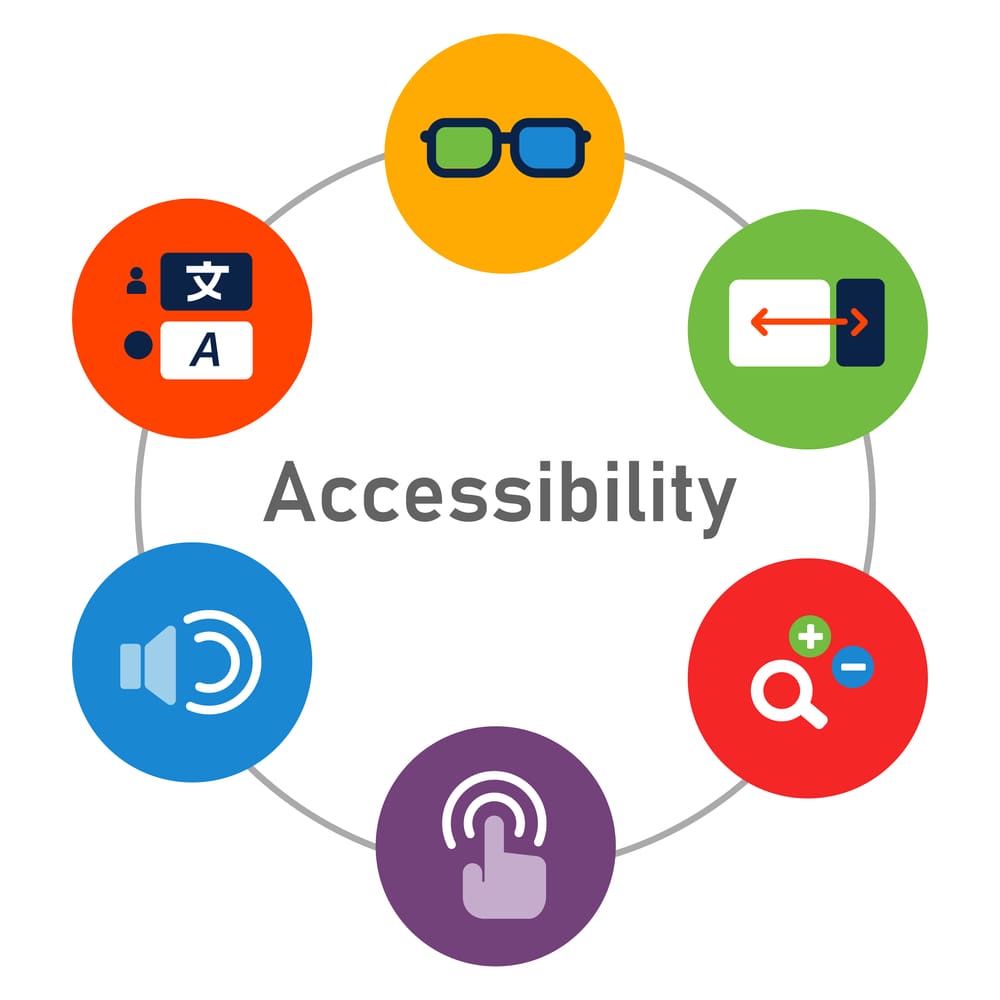The Role of Accessibility in Modern Web Design

As a vast repository of information and a platform for connection, it’s critical for the internet to be universally accessible. In the realm of web design, this translates to the concept of accessibility – ensuring that everyone, regardless of ability, can perceive, understand, navigate, and interact with websites.
Let’s take a deeper dive into the importance of accessibility in modern web design. We’ll be exploring core principles, the benefits it offers, and actionable steps to implement it.
The Necessity of Inclusive Design
A Broadened Audience
By prioritizing accessibility, websites tap into a wider audience. This includes individuals with visual, auditory, motor, or cognitive impairments, as well as users with situational limitations – those browsing on a mobile device with a slow internet connection, for example.
Accessible design fosters inclusivity, ensuring everyone has an equal opportunity to engage with the content and functionality of a website.
Legal and Ethical Considerations
In many regions, web accessibility is not merely a best practice, but a legal requirement.
Additionally, there’s a strong ethical argument for prioritizing accessibility. Every user deserves unimpeded access to information and online experiences.
By neglecting accessibility, websites become exclusionary and hinder the potential of the digital landscape.
Dissecting Accessibility: Core Principles
The World Wide Web Consortium (W3C) has established the Web Content Accessibility Guidelines (WCAG) – a set of internationally recognized standards for web accessibility.
WCAG outlines four core principles, which act as a foundation for accessible design: Perceivable, Operable, Understandable, and Robust (POUR).
POUR
- Perceivable: Information and user interface components need to be presented in a way that can be perceived by users, regardless of their sensory limitations. This includes providing alternative text for images, using clear color contrast, and ensuring proper audio quality.
- Operable: User interfaces and navigation should be operable for all. This involves making content accessible through keyboard navigation, ensuring compatibility with assistive technologies, and avoiding time-based content that can be challenging for users with motor impairments.
- Understandable: The language used on the website should be clear and concise, and the information structure should be logical and easy to navigate. This includes defining technical jargon, using headings and labels effectively, and ensuring content is compatible with different reading abilities.
- Robust: Websites should be compatible with a wide range of assistive technologies, including screen readers, voice recognition software, and screen magnification tools. Additionally, content should remain accessible even when using different browsers or operating systems.
Enhancing User Experience for All
Accessible web design goes beyond just ticking boxes. It’s about creating a user experience that caters to a diverse range of needs. This includes using sufficient color contrast between text and background, ensuring proper font size and spacing, and providing alternative ways to access visual content, such as audio descriptions.
Not everyone interacts with websites using a traditional mouse and keyboard. Accessible design considers users who rely on touchscreens, voice commands, or assistive technologies. This involves ensuring interactive elements are large enough for touch targets, implementing keyboard navigation for all functionalities, and providing clear instructions for using forms and other interactive components.
Beyond Compliance: The Business Case for Accessibility
Search engines like Google prioritize websites that are accessible and user-friendly. Websites that adhere to accessibility guidelines often have a cleaner and more streamlined code structure, which can positively impact search engine optimization (SEO).
Additionally, with a wider audience reach due to accessibility, websites can generate more user engagement, which is another factor considered by search engine algorithms.
These days, consumers have become increasingly conscious of inclusivity. By prioritizing accessibility, businesses demonstrate their commitment to social responsibility and cater to a broader demographic. This can lead to increased brand loyalty and a positive brand image.
Learn More About Accessibility in Website Design at Pink Dog Digital
Ready to embrace inclusivity and create an accessible website that reaches and resonates with everyone? Pink Dog Digital can help! Our team of design and content creation experts specializes in accessible content creation, interactive web design, email marketing, and social media marketing.
Let’s go beyond compliance together and create a digital experience that is truly accessible for all. Get in touch with us by filling out our online contact form or sending us an email at pinkdogdigital@gmail.com to learn more.

